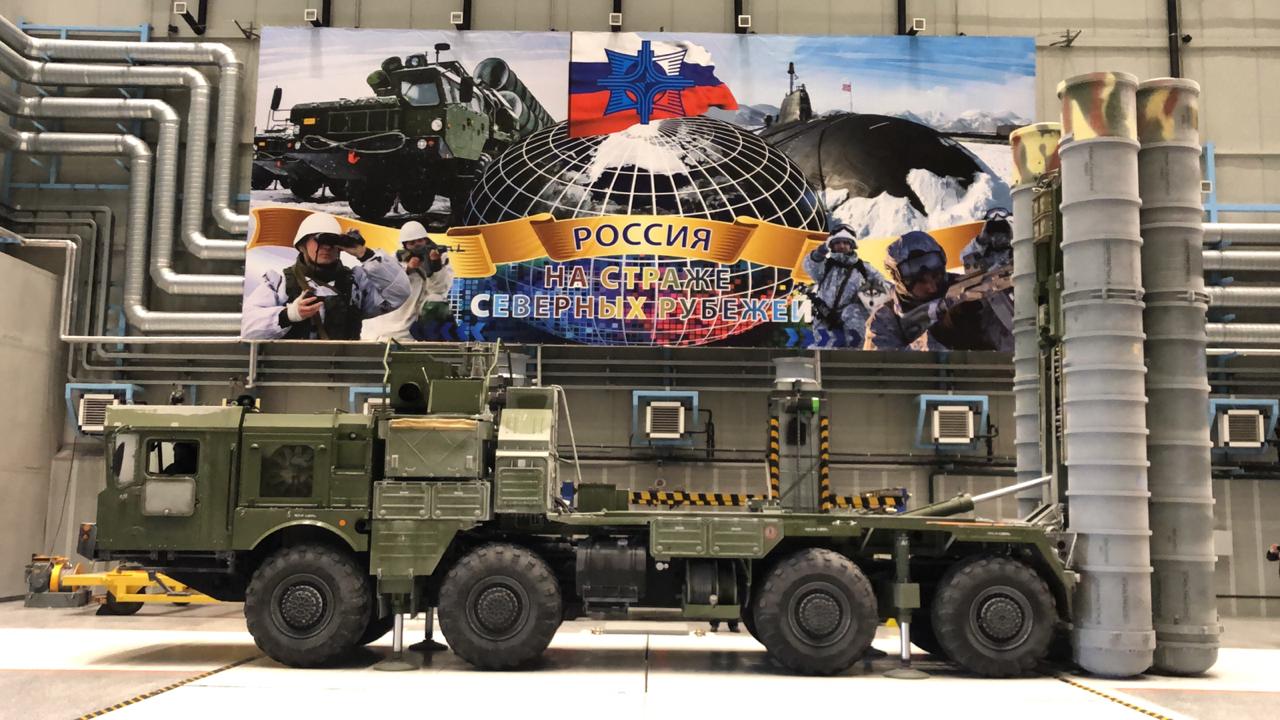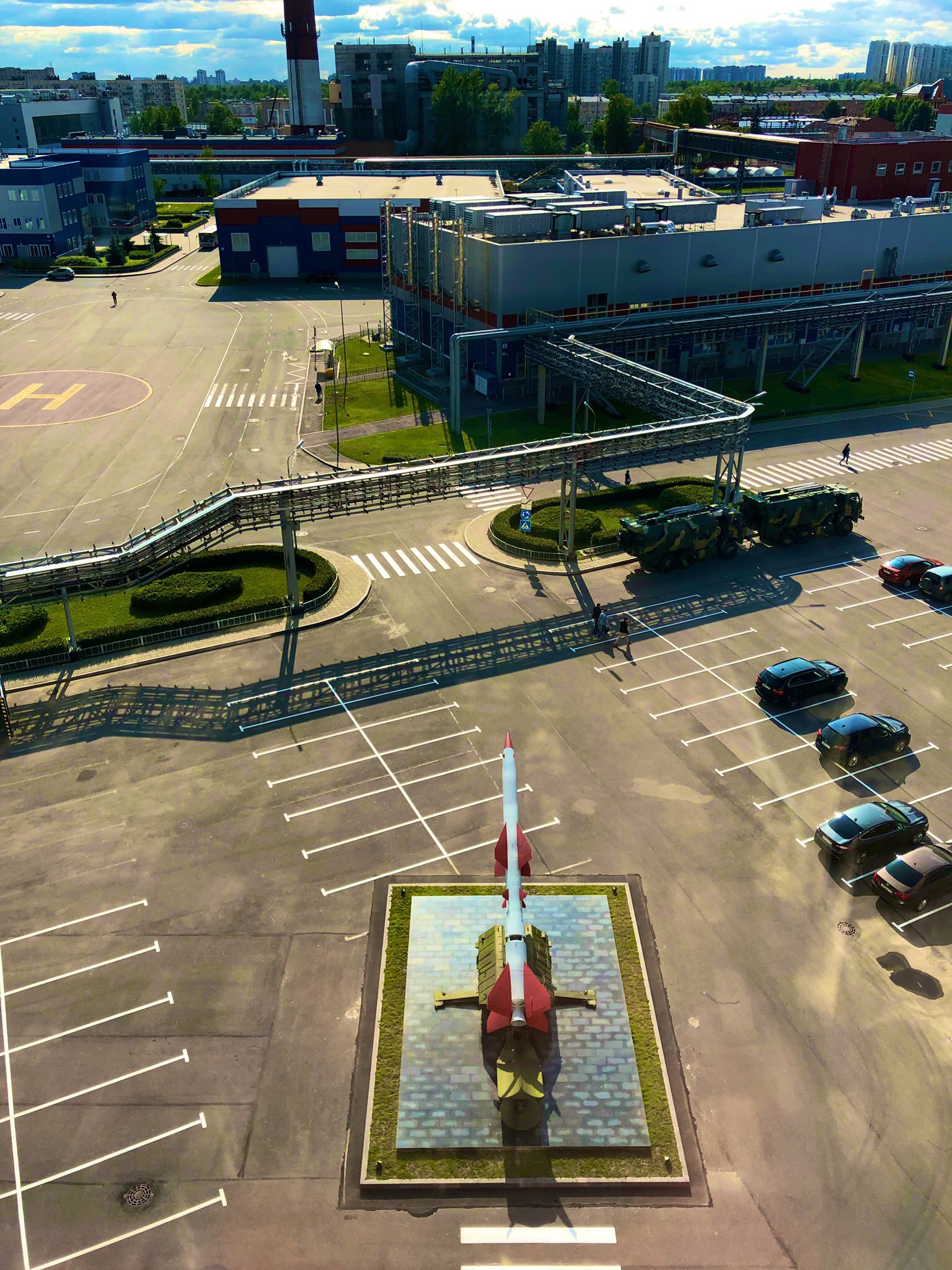
ST. PETERSBURG, RUSSIA. You never need to look very far for Cold War metaphors in Russia. But if there’s one that greets you as you drive into a sprawling gated-off site on the outskirts of St. Petersburg, the first thing you see is an SA-2 Dvina — the anti-air missile that, in 1960, brought down a U-2 spy plane flown by CIA pilot Francis Gary Powers. The missile, painted white and orange, is a proud tribute to an incident that Russia still regards fondly, even if it harks back to a dangerous, uncertain and historically threatening time.

Most Russians — certainly those involved in the country’s defence — will tell you that history works in befuddling spirals. And the rank hostilities of that time have, at least in part, surfaced again. And if there had to be one epicentre in Russia’s enormous landmass, it would be here.
It is this facility on the cold, windswept shores of the Baltic Sea that finds itself at the centre of distant India’s most delicate strategic tangle. It is from here, a production facility of Russia’s Almaz Antey, that India will begin receiving five regiments of the explosively controversial S-400 Triumf advanced anti-aircraft defence system starting next year. Amidst very tense maneouvering with an openly angry Trump Administration, India has stood its ground and will be clearing payments to Russia for the missile system shortly — something that will do two things: set the $5.2 billion contract in motion after months of escalating pressure, and two, instantly trigger production at the Almaz Antey’s North West production centre here on the outskirts of St. Petersburg.
https://youtu.be/Dh3fT9nuLD4
Livefist Editor Shiv Aroor was invited to be among India’s first journalists to tour the production facility and be briefed on the S-400 system. As per terms of the contract, deliveries roughly two years after first payments. The facility therefore aims to deliver all five systems between late 2020 till 2024, with one regiment a year, a schedule that has come under pressure owing to diplomatically-compelled delays in the first payments.
“There will be no delays in delivery, The production facility is equipped with state of art equipment and highly automated lines. Even if the first payment is delayed, even if there are other orders being executed, we are absolutely sure the lines can be worked at capacity to deliver on time and within the framework of the contract,” says Irina Volokitina, first deputy director at the Almaz Antey North West Production Facility.

This sprawling production facility was placed under American economic sanctions in July 2014 by the Obama Administration following Russia’s annexation of the Crimean Peninsula and the ongoing Ukrainian crisis, sanctions that have forced India to rapidly evolve new payment methods for both pipeline and fresh defence contracts. The S-400 contract, signed late last year by the Putin and Modi governments, presented itself as a test case for how the two countries could bypass sanctions for payments to be made.
“With the S-400 we have found a permanent solution with the Indian side,” says Vladimir Drozhzhov, deputy director of Russia’s apex Federal Service on Military Technical Cooperation (FSMTC). “The details are quite confidential since banking institutions are involved, but there are nuances which will change with each contract. On big contracts with India, we have agreed with a schedule of payments that are mutually acceptable to both sides. These payment methods and schedules are fully in line with the contracts — they are designed to make the sure the contracts happen on time. The solution that we have found can be applied to future contracts.”
The S-400 system, widely acknowledged to be among the most effective air defence systems, is currently being produced for the Russian military and most recently Turkey — reports suggest deliveries to the country have just begun. The latter contract has placed Turkey in a destructive confonrtation with the United States, with billions of dollars in armament supply (including the F-35 fighter) among much else at stake. India’s own S-400 situation has been less angular, less fraught with absolutes, mostly owing to India’s long-standing relationship with Russia, as well as a strategic hedging that has seen the United States partake substantially in India’s rising regional ambitions. While Russia has $14 billion in defence contracts being executed at present to India, the United States will be looking to close no less than $10 billion in the next three years, consolidating a steady-rate supply of advanced armament to a country it sees, quite plainly, as a stabilising force to China’s own unpredictable rise. China, also a buyer of the S-400 hasn’t helped Washington’s mood, though on that radial, the U.S. doesn’t have leverage.
India, incidentally, is in advanced talks to procure the U.S. National Advanced Surface to Air Missile System (NASAMS II). When Livefist asked about concerns over whether the S-400 would plug seamlessly into the Indian air defence network — and crucially be able to ‘talk’ to other air defence systems (including the NASAMS II) in a dynamic and emergent targeting scenario, Volokitina put it delicately.
“The decision on which anti-missile system to use is India’s sovereign choice. What we can say for sure is that the S-400 is the only multilayered system in the world and can provide comprehensive protection,” she said.
She then went to speak of why the S-400, in Russia’s view is acknowledged as one of the world’s most effective air defence systems.
“The S-400 has three advantages against competitors,” Volokitina said. “First, the range (detection and engagement) is twice its nearest rivals. Its range is up to 400 km, and can cover heights of up to 30 km. The second advantage is time taken to deploy — 3 times shorter than rivals. The S-400 is not a separate system — it’s a whole complex. It has a whole array of systems. The missiles in the system have different capabilities and ranges. So it provides multilayered protection. No other system in the world has the same capability. The third advantage is the competitive price.”
Indian Air Force teams will arrive in Russia next year for inspection and training on the S-400 to coincide with the production of the first regiment ahead of delivery. Deployed in India, and with a sweep that covers the full span of air threats from Pakistan and most from China, the S-400 is designed to destroy ballistic targets, unmanned air targets and all kinds of aircraft. Volokitina stresses that it is also one of most jam resistant systems in the world. The unprecedented mobilisation of U.S. heft against S-400 contracts, most here at Almaz Antey believe, is more testament than anything else to the quality of the system.
“The S-400 is capable of detecting and destroying stealth targets,” says an officer at Almaz-Antey. But due to objective reasons, there has never been a situation where it has been required to do so. We have worked out these scenarios. We also know from the western media that governments acknowledge those capabilities.”
The S-500 Prometey, a successor to the S-400, will be operational with the Russian Army next year. The system essentially replace and supplement some of the S-400’s missiles to give it a strategic anti-missile capability.
